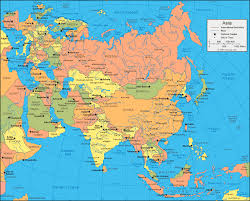
1. Ancient Near East & Mesopotamia
- Sargon of Akkad (c. 2334–2279 BCE):
- Founder of the Akkadian Empire (first multi-ethnic empire in Mesopotamia).
- Hammurabi (1792–1750 BCE):
- Babylonian king; creator of the Code of Hammurabi (early legal system).
- Nebuchadnezzar II (605–562 BCE):
- Neo-Babylonian ruler; built the Hanging Gardens of Babylon.
2. South Asia (India, Sri Lanka, Nepal)
- Ashoka the Great (268–232 BCE):
- Mauryan emperor; spread Buddhism after the Kalinga War; erected edicts across India.
- Chandragupta II (Vikramaditya, c. 375–415 CE):
- Gupta Empire’s golden age ruler; patron of arts and science (Kalidasa’s era).
- Raja Raja Chola I (985–1014 CE):
- Expanded the Chola Empire; built the Brihadeeswara Temple in Thanjavur.
- Kanishka (127–150 CE):
- Kushan emperor; patron of Buddhism (convened the 4th Buddhist Council).
- Prithviraj Chauhan (1178–1192 CE):
- Rajput king who resisted Muhammad Ghori in the Battles of Tarain.
3. East Asia (China, Japan, Korea)
- Qin Shi Huang (221–210 BCE):
- First emperor of unified China; built the Terracotta Army and Great Wall.
- Emperor Taizong of Tang (626–649 CE):
- Golden Age ruler of the Tang Dynasty; promoted Confucianism and Buddhism.
- Genghis Khan (1206–1227 CE):
- Founder of the Mongol Empire; conquered much of Asia and Europe.
- Kublai Khan (1260–1294 CE):
- Mongol ruler; established the Yuan Dynasty in China.
- Emperor Jimmu (mythical, c. 660 BCE):
- Legendary first emperor of Japan.
- King Sejong the Great (1418–1450 CE):
- Korean Joseon ruler; creator of Hangul (Korean alphabet).
4. Southeast Asia (Khmer, Srivijaya, Vietnam)
- Jayavarman VII (1181–1218 CE):
- Khmer king; built Angkor Thom and Bayon Temple (Cambodia).
- Suryavarman II (1113–1145 CE):
- Built Angkor Wat, the world’s largest religious monument.
- Tran Hung Dao (1228–1300 CE):
- Vietnamese general-king who repelled Mongol invasions.
- Hayam Wuruk (1350–1389 CE):
- Javanese king of Majapahit; empire’s peak under Prime Minister Gajah Mada.
5. Central Asia & the Steppe
- Tamerlane (Timur) (1370–1405 CE):
- Turco-Mongol conqueror; founded the Timurid Empire (Samarkand as capital).
- Mahmud of Ghazni (998–1030 CE):
- Afghan ruler; launched 17 raids into India, looting temples like Somnath.
6. Middle East (Persia, Arabia, Anatolia)
- Cyrus the Great (559–530 BCE):
- Founder of the Achaemenid Persian Empire; known for tolerance (Cyrus Cylinder).
- Darius I (522–486 BCE):
- Expanded Persia; built Persepolis; organized administrative provinces (satrapies).
- Saladin (1174–1193 CE):
- Kurdish sultan; recaptured Jerusalem from Crusaders.
- Suleiman the Magnificent (1520–1566 CE):
- Ottoman Sultan; expanded the empire to its zenith (Golden Age of Islam).
7. Himalayan Kingdoms (Tibet, Nepal)
- Songtsen Gampo (618–650 CE):
- Tibetan king; introduced Buddhism; married Chinese and Nepali princesses.
- Prithvi Narayan Shah (1743–1775 CE):
- Unified modern Nepal; founder of the Shah dynasty.
Key Observations
- Religious Patrons:
- Ashoka (Buddhism), Kanishka (Buddhism), Suryavarman II (Hinduism).
- Architectural Legacy:
- Taj Mahal (Shah Jahan), Angkor Wat (Suryavarman II), Persepolis (Darius).
- Conquerors & Unifiers:
- Genghis Khan (Mongols), Qin Shi Huang (China), Prithvi Narayan Shah (Nepal).
- Legal Innovators:
- Hammurabi (code of laws), Ashoka (Dhamma edicts).
Legacy of Asian Monarchs
- Cultural Synthesis: Blending of Hindu-Buddhist, Islamic, and Confucian traditions.
- Trade Networks: Silk Road (Chinese emperors), Indian Ocean trade (Chola kings).
- Resistance: Prithviraj Chauhan (against Turks), Tran Hung Dao (against Mongols).
